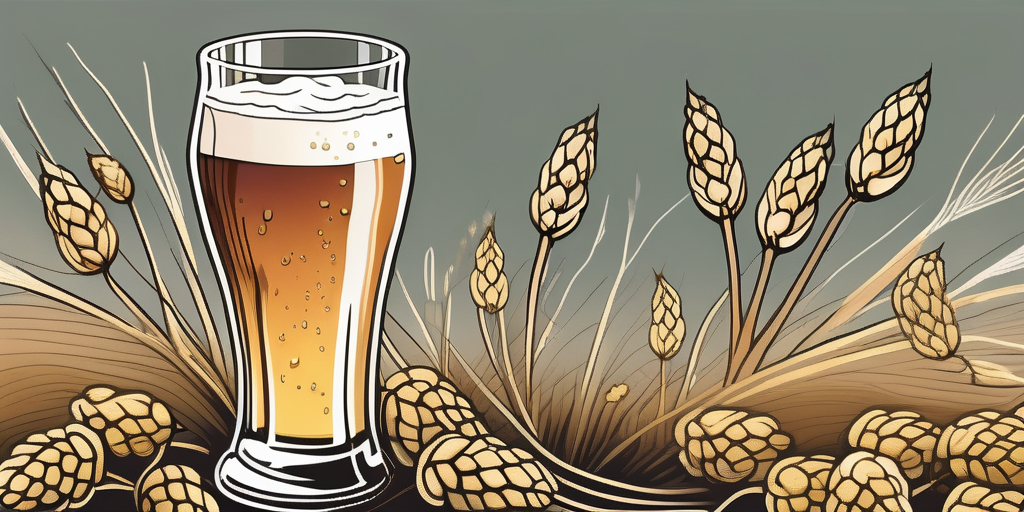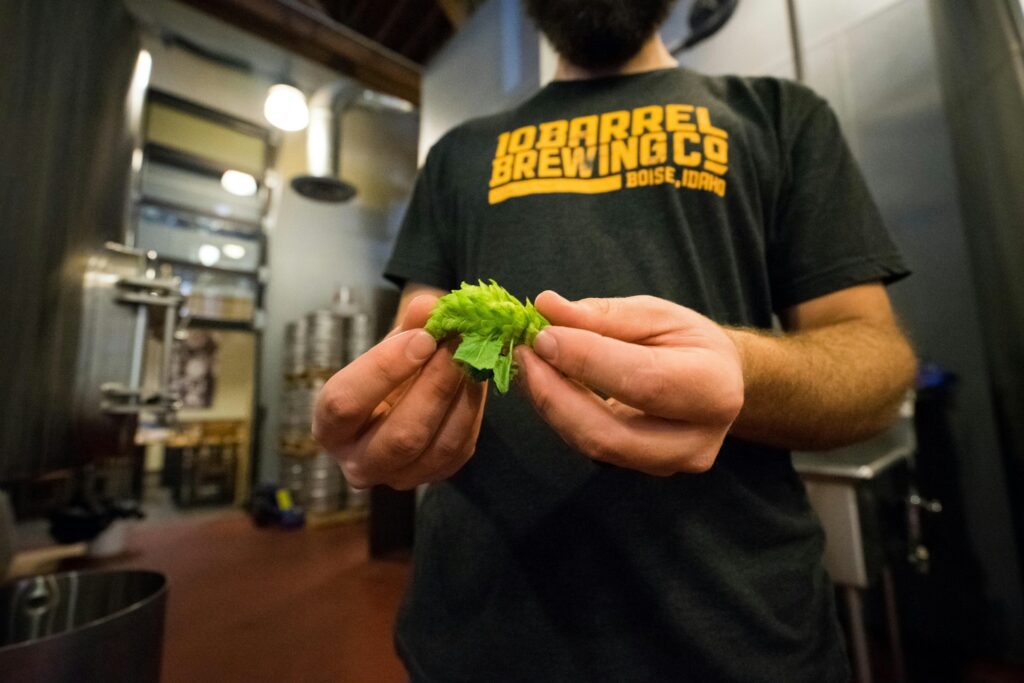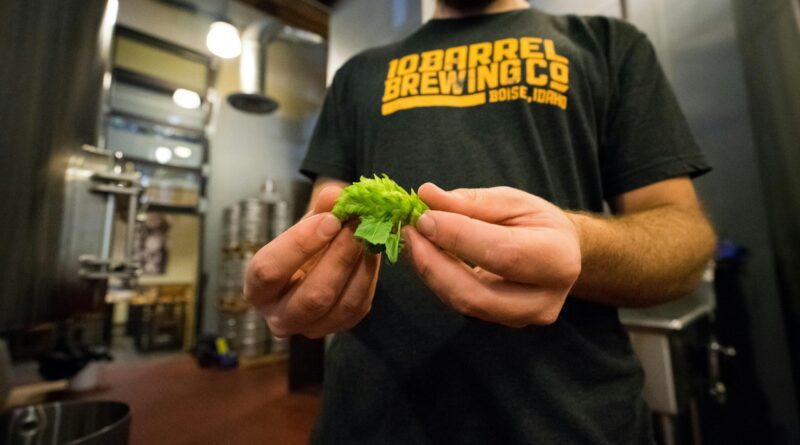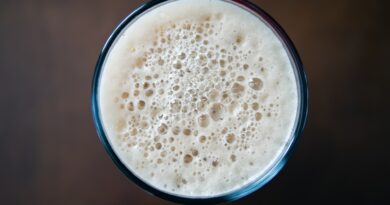What a Hoppy Beer is and Why its Bitter Taste is Best
“Hoppy” beer is a popular style of beer that has gained quite a following on the craft beer scene in recent years. Known for its distinct bitter taste and aroma, hoppy beers have become a favorite among craft beer enthusiasts.
Today, we will explore what exactly makes a beer “hoppy,” the role of hops in beer brewing, the science behind the bitterness in hoppy beers, the appeal of this style, brewing techniques, pairing hoppy beers with food, and how to start exploring this unique and flavorful category of beer.
Introduction to Hoppy Beer
When we talk about hoppy beer, we are referring to beer styles that have a dominant hop character. Hops are flowers that are used in the brewing process to add bitterness, aroma, and flavor to the beer. Hoppy beers can range from mildly hoppy to extremely hop-forward, depending on the type of hop used and the brewing techniques.
Hops come in different varieties, each contributing its unique characteristics to the beer. Some common hop varieties include Cascade, Centennial, and Citra, each known for their distinct flavors and aromas. Cascade hops, for example, are known for their floral and citrusy notes, while Citra hops impart tropical fruit and citrus flavors to the beer. The variety of hops used and the timing of their addition during the brewing process play a significant role in determining the final hop profile of the beer.
One of the most popular styles of hoppy beer is the India Pale Ale (IPA), known for its strong hop presence and bitterness. IPAs can be further categorized into sub-styles such as American IPA, Double IPA (DIPA) which is sometimes called an Imperial IPA, and New England IPA (NEIPA), each offering a unique hop experience to the beer drinker.
The craft beer movement has seen a surge in the popularity of hoppy beers, with breweries experimenting with different hop combinations and techniques to create innovative and flavorful brews, seeking that single unique flavor.
The Role of Hops in Beer Brewing
Hops play a vital role in the brewing process, contributing to both the flavor and stability of the beer. They act as a natural preservative, inhibiting the growth of bacteria and providing balance to the sweetness of the malt, offering up a slightly bitter flavor. Hops also add complexity to the beer by imparting various flavors and aromas such as floral, citrus, piney, and herbal notes.
In addition to flavor and aroma, hops contribute to the overall bitterness of the beer. The bitterness is measured in International Bitterness Units (IBUs), which quantify the amount of hop bitterness present in the beer. You might sometimes see IBU referred to as “International Bittering Units.” High IBU beers indicate a more bitter beer, while lower IBUs result in a milder taste.
Furthermore, hops are classified into different varieties, each with its unique characteristics. Some popular hop varieties include Cascade, Centennial, and Saaz. Cascade hops, for example, are known for their floral and citrusy aroma, making them a favorite choice for American Pale Ales. On the other hand, Saaz hops, originating from the Czech Republic, are prized for their mild and earthy aroma, often used in traditional Pilsners.
Moreover, the timing of hop additions during the brewing process significantly impacts the final flavor profile of the beer. Early hop additions contribute more to the beer’s bitterness, while late additions, known as aroma hops, enhance the fragrance and taste without overwhelming bitterness. Dry hopping, a technique where hops are added post-fermentation, is another method used to intensify the hop aroma without increasing bitterness.
Understanding Bitterness in Beer: IBUs
The bitterness in hoppy beers is measured on the IBU scale, which was developed to provide brewers and consumers with a standardized way of assessing a beer’s bitterness. It transcends the different flavors created by various brewers.
IBUs measure the concentration of hop acids in the beer, specifically iso-alpha acids. This scale ranges from 0 to over 100, with higher numbers indicating a more bitter beer.
While IBUs are a useful tool for comparing the relative bitterness of different beers, it is important to note that taste perception plays a significant role. Factors such as malt sweetness and hop flavor can influence how bitter a beer tastes, even if the actual IBU value is the same.
It’s fascinating to consider how the brewing process can impact the perceived bitterness of a beer. For example, the timing of hop additions and the amount of hops used during brewing can affect the extraction of hop compounds and ultimately influence the beer’s bitterness profile. Additionally, the choice of hop variety can bring different flavor characteristics to the beer, contributing to its overall taste complexity.

The interaction between hops and malt in the brewing process is a delicate dance that can greatly influence the final flavor of the beer. The sweetness of malt can balance out the bitterness of hops, creating a harmonious flavor profile that is pleasing to the palate. This balance is often a key consideration for brewers aiming to create well-rounded and enjoyable beers.
The Appeal of Hoppy Beers
The hoppiest beers have gained a devoted following due to their bold and complex flavors. The bitterness provided by the hops adds an element of excitement to the drinking experience, making each sip an adventure. The flavors and aromas of hoppy beers can range from floral and citrusy flavors to resinous and earthy, providing a wide variety of options for beer enthusiasts to explore.
The bitterness in hoppy beers can be incredibly refreshing, cutting through the richness of certain dishes and cleansing the palate. This makes them a popular choice for pairing with spicy foods and strong cheeses.
One of the key factors contributing to the appeal of hoppy beers is the variety of hop strains available to brewers in the craft beer industry. Each hop variety imparts its own unique characteristics to the beer, influencing its flavor, aroma, and bitterness profile. Some popular hop varieties used in hoppy beers include Cascade, Citra, Simcoe, and Amarillo, each contributing distinct notes ranging from citrus and pine to tropical fruits and floral undertones.
Brewing Techniques for Hoppy Beers
To create a hop-forward beer, brewers employ various techniques during the brewing process. One common technique is dry hopping, which involves adding hops to the fermentation vessel to enhance the aroma without contributing significantly to the beer’s bitterness. Dry hopping is typically done after primary fermentation to preserve the delicate hop oils and maximize aroma extraction. The hops can be left in contact with the beer for several days to a week, allowing the flavors to infuse into the brew.
Another method is hop bursting, where hops are added late in the boil to maximize the flavor and aroma while minimizing the amount of bitterness extracted. By adding a large quantity of hops towards the end of the boil or during whirlpooling, brewers can achieve a beer with intense hop character and minimal perceived bitterness. This technique is especially popular in brewing hazy or New England-style IPAs, where a smooth mouthfeel and juicy hop flavors are desired.
Hoppy beers also often feature a higher alcohol content, which helps to balance out the bitterness and provide a sturdy backbone for the intense hop flavors. The alcohol sweetness can help counteract the bitterness of the hops, creating a more harmonious flavor profile. However, it is important for brewers to strike a careful balance, ensuring that the bitterness does not overpower the other elements of the beer. Finding the right ratio of alcohol sweetness, hop bitterness, and malt backbone is crucial in creating a well-rounded and enjoyable hoppy beer.

Pairing Hoppy Beers with Food
The bold flavors and bitterness of hoppy beers make them an excellent choice for pairing with a wide range of foods. The bitterness can help to cut through the richness of fatty dishes, while the hop flavors can complement and enhance certain flavors in the food, exciting the old taste buds.
When pairing hoppy beers with food, it is essential to consider the intensity and flavors of both the beer and the dish. For example, a hoppy IPA is often the type of beer that is a great match for spicy foods. The bitterness can help to temper the heat. Similarly, hoppy beers with citrusy or fruity flavor can be paired with grilled seafood or light salads.
Experimentation is key when it comes to pairing hoppy beers with food. Don’t be afraid to explore different ways to combine flavors and try new things. You might be pleasantly surprised by the delightful pairings you discover. After all, the fun is in the exploration!
Another important factor to consider when pairing hoppy beers with food is the carbonation level of the beer. Beers with higher carbonation can help cleanse the palate between bites, making them a great match for rich or heavy dishes. On the other hand, beers with lower carbonation levels may be better suited for more delicate or subtle flavors.
Additionally, the brewing process can influence the flavor profile of hoppy beers. Beers brewed with a single hop variety, known as single-hop beers, can offer a unique tasting experience and allow for a more focused pairing with specific dishes. On the other hand, hoppy beers brewed with a blend of different hop varieties can provide a complex flavor profile that can complement a wider range of foods.
Start Exploring Hoppy Beers
If you’re new to hoppy beers or simply looking to expand your palate, there are countless options available for you to explore. Start by trying different styles of hoppy beers, such as India Pale Ales (IPAs), American Pale Ales (APAs), or Double IPAs (DIPAs). Pay attention to the hop varieties used and the flavor profiles of each beer.
Visiting local breweries and beer festivals is another excellent way to discover new hoppy beers. Craft brewers often experiment with unique hop combinations and brewing techniques, creating one-of-a-kind beers that you won’t find anywhere else. Take the opportunity to talk to the brewers and learn more about their process.
When delving into the world of hoppy beers, it’s essential to understand the role of hops in beer-making. Hops not only contribute bitterness but also add aroma and flavor to the brew. Different hop varieties can impart notes of citrus, pine, floral, or even tropical fruit flavors to the beer, creating a diverse range of taste experiences.
Exploring hoppy beers can lead you to discover the concept of hop-forward beers. These beers emphasize the hop flavors and aromas, often showcasing the nuances of different hop varieties. From the classic bitterness of a West Coast IPA to the juicy and hazy characteristics of a New England IPA, each style offers a unique perspective on hoppy beers.
Cheers!



